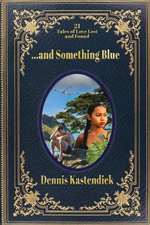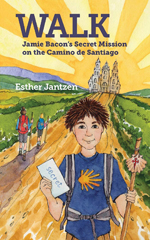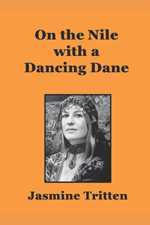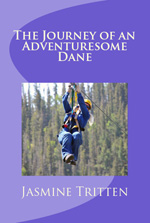Author Dennis Kastendiek is a master at creating memorable characters whose life circumstances place them squarely in the underdog category. Reviewers call his debut novel, A Seven Month Contract at Four Thousand Per (2020), “a hilarious romp through the world of theater and life undercover” and “brilliantly written, with compelling characters” and the “unique combination of fun and craziness of Some Like it Hot wonking with the television cast of Fame.” For more information about Dennis and his writing, go to his 2018 interview.
 What is your elevator pitch for A Seven Month Contract at Four Thousand Per?
What is your elevator pitch for A Seven Month Contract at Four Thousand Per?
Johnny is just an ordinary Kansas high school graduate being raised along with his sister by a single working mother. But he finds himself in a fix when pranking with his sister results in her broken leg just before a community playhouse review that their mother is overseeing. Catering contracts have been signed, the costumes and set designed and created, rental on the playhouse paid in advance. Johnny learned all his sister’s lines watching rehearsals. Their mother doesn’t need to draw a picture for the guilty Johnny — he must fill in for his sister. The story was written online with a pen pal, swapping scenes and chapters over many months. The characters are original, a lot of the story arc built around classics like Billy Wilder’s Some Like it Hot and Gelbart and Mcguire’s Tootsie. The pathetic hero and his/her surrounding performers just happen to be much younger.
What unique challenges did this work pose for you?
A major challenge was to keep this oft-told tale fresh. We tried to do that by focusing on the characters and their motivations. Johnny’s mother loses her job at Walmart because of having to drive her daughter to and from doctor appointments and rehabilitation sessions. A talent scout lazily passing through another hayseed town stops to watch the local play and is astounded by the talents of the lead actress. One of his major clients is looking for a star to act in what is hoped will be a blockbuster aimed largely at a teenage audience. Hence a seven-month contract at four thousand per is the carrot dangled in front of Johnny/Johnnie (the lead “actress”). The snowball starts rolling from there.
Tell us how the book came together.
A lot of the foundation was in exchanging ideas and scenarios with my coauthor. He has traveled more widely than I have, so I relied on him for the “road story” expertise. We included another Kansas cast member, Johnny’s good friend (and secret crush) Laura, noted by the talent scout and invited to join the traveling troupe. Johnny would now have at least one friend “in” on his crazy conspiracy. The writing itself took months. We rejected ideas, modified others, those kinds of things.
Who are your main characters, and why will readers connect with them?
Johnny and his friend Laura, the town minister’s daughter, are put on a Greyhound to California by their respective parents. Johnny gets put through a wringer but is determined to keep a roof over the heads of his mother and sister. He doesn’t see any other way to earn twenty-eight thousand dollars to do so. Family is his main motive. Laura has had a long dream of attaining stardom and is swept off her feet by another cast member after they arrive in California. Johnny’s hopes of rooming with Laura are thus dashed. A woman named Patricia overhears Johnny’s dilemma and offers to room with “her.” Johnny now has a new deception to portray. When Patricia senses something rotten in Denmark, Johnny invents a false story to share with her, that he is transsexual. Patricia accepts the tale. Good motives and strange mischief.
Is there a scene in your book you’d love to see play out in a movie?
That’s a particularly good question. I’m in a critique group with well-known western writer Melody Groves. As I read my chapters, she kept saying, “I can just see these kids, the bus they travel in, the cities they travel to. This would make a great one of those ‘Afterschool Movies.’” So, long story short, I wouldn’t mind the whole thing as a movie.
What was the most interesting fact you discovered while doing research for this book?
One interesting fact I discovered came from my coauthor. There’s a scene in the book where Johnny and Laura are rolling their luggage from a bus toward a taxi stand. My coauthor had several careers, one of them working on the Apollo Project. My character makes the comment, “I can’t believe we landed a man on the moon before luggage makers decided to put wheels on luggage.” Again, I took his word on that.
What was your favorite part of putting this project together?
Favorite is a tough word to pin down. My favorite genre is just plain good writing. The swapping of paragraphs and scenes and chapters between my coauthor in Kansas and me in Albuquerque was fun. But for a long time I really didn’t think the resulting book was publishable. It needed work. Melody Groves (mentioned above) invited me into her critique group. Advice poured like welcome rain. After all the revision I put into it, my coauthor offered me author credit. I share that gracious gesture of his in the acknowledgments. So I guess my favorite role was being part of a shared effort. This book, like the Apollo Project my coauthor worked on, was a team effort. A goldanged dude landed on the moon. I just hope readers get a similar kick from reading about this straight kid in a dire bind as I got from writing the thing.
 Before writing A Seven Month Contract at Four Thousand Per, you were predominately a short story writer. What is it about the short story form that draws you to it?
Before writing A Seven Month Contract at Four Thousand Per, you were predominately a short story writer. What is it about the short story form that draws you to it?
The swirling and often moving trip of the short story draws me to that genre. I often reread Salinger’s magnificent “For Esme, with Love and Squalor.” I find the quiet space that I need, and I enter that other world, that other dimension as another great named Serling put it, and the story washes over me. The war, the girl with the oversized watch and the semi-obnoxious little brother, the rain, the wisecracks with Clay about pussycats and stamp collections. They all wash over me, and I find myself crying my heart out. Singers like Hank Williams, Neil Young, a retired mailman named John Prine, a Canadian named Leonard Cohen can do the same. They distill the essence of life. They age it in them old oaken barrels. Then they pour it all gently into a glass and silently ask, “Have you ever tasted anything like this before?”
When you start a new writing project, do you have a theme or message in mind or is that something that develops as the story unfolds?
I think every one of my stories started differently. If you read my collection, I partially hope you think, “THIS is the same guy who wrote THAT?” I try not to write the same story twice. In my reflective old age, I wish I had been more prolific. But I’m somewhat happy about the curs I unleashed on this world.
Is there anything else you’d like readers to know?
I’d like my readers to know that I’m just like them. I don’t want to be a carnival barker or a rich encyclopedia salesman whose product is going to go out of date in about a year. I’d like to be remembered as someone who told a few stories, maybe left behind a few tears, a few smiles, a few laughs. Maybe a thought: this place can be better.
 KL Wagoner (writing as Cate Macabe) is the author of This New Mountain: a memoir of AJ Jackson, private investigator, repossessor, and grandmother. Kathy posts to a speculative fiction blog at klwagoner.com and writes about memoir at ThisNewMountain.com.
KL Wagoner (writing as Cate Macabe) is the author of This New Mountain: a memoir of AJ Jackson, private investigator, repossessor, and grandmother. Kathy posts to a speculative fiction blog at klwagoner.com and writes about memoir at ThisNewMountain.com.






















